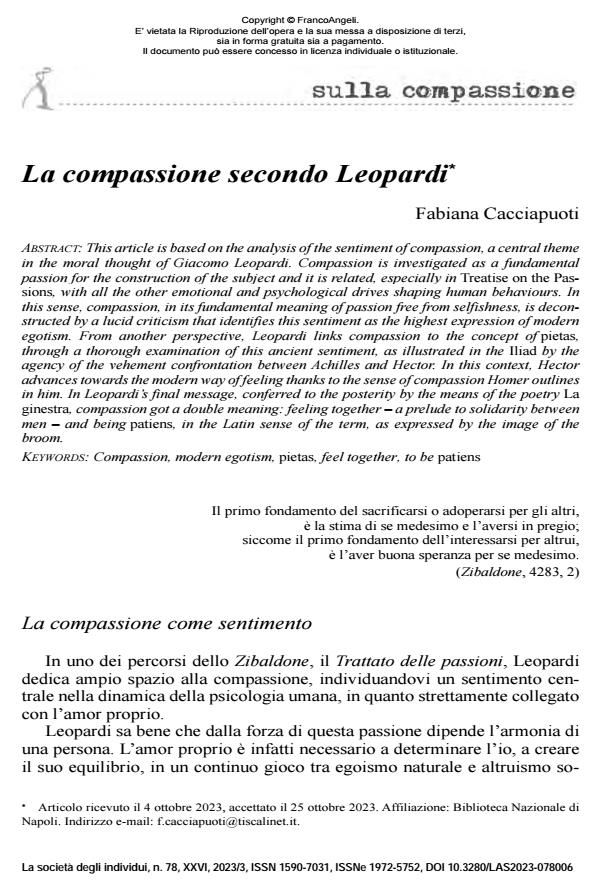La compassione secondo Leopardi
Journal title SOCIETÀ DEGLI INDIVIDUI (LA)
Author/s Fabiana Cacciapuoti
Publishing Year 2024 Issue 2023/78
Language Italian Pages 12 P. 77-88 File size 78 KB
DOI 10.3280/LAS2023-078006
DOI is like a bar code for intellectual property: to have more infomation
click here
Below, you can see the article first page
If you want to buy this article in PDF format, you can do it, following the instructions to buy download credits

FrancoAngeli is member of Publishers International Linking Association, Inc (PILA), a not-for-profit association which run the CrossRef service enabling links to and from online scholarly content.
This article is based on the analysis of the sentiment of compassion, a central theme in the moral thought of Giacomo Leopardi. Compassion is investigated as a fundamental passion for the construction of the subject and it is related, especially in Treatise on the Pas¬sions, with all the other emotional and psychological drives shaping human behaviours. In this sense, compassion, in its fundamental meaning of passion free from selfishness, is de¬con¬structed by a lucid criticism that identifies this sentiment as the highest expression of modern egotism. From another perspective, Leopardi links compassion to the concept of pietas, through a thorough examination of this ancient sentiment, as illustrated in the Iliad by the agency of the vehement confrontation between Achilles and Hector. In this context, Hector advances towards the modern way of feeling thanks to the sense of compassion Homer outlines in him. In Leopardi’s final message, conferred to the posterity by the means of the poetry La ginestra, compassion got a double meaning: feeling together – a prelude to solidarity between men – and being patiens, in the Latin sense of the term, as expressed by the image of the broom.
Keywords: Compassion, modern egotism, pietas, feel together, to be patiens
Fabiana Cacciapuoti, La compassione secondo Leopardi in "SOCIETÀ DEGLI INDIVIDUI (LA)" 78/2023, pp 77-88, DOI: 10.3280/LAS2023-078006